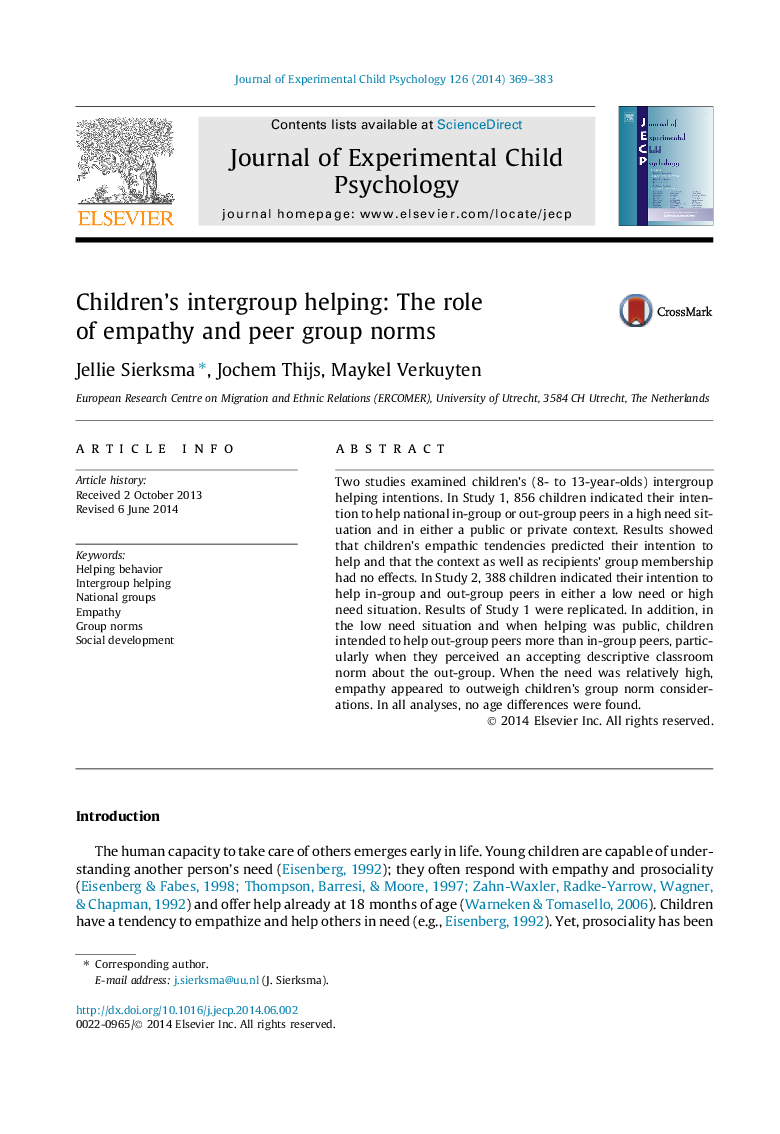| Article ID | Journal | Published Year | Pages | File Type |
|---|---|---|---|---|
| 7275418 | Journal of Experimental Child Psychology | 2014 | 15 Pages |
Abstract
Two studies examined children's (8- to 13-year-olds) intergroup helping intentions. In Study 1, 856 children indicated their intention to help national in-group or out-group peers in a high need situation and in either a public or private context. Results showed that children's empathic tendencies predicted their intention to help and that the context as well as recipients' group membership had no effects. In Study 2, 388 children indicated their intention to help in-group and out-group peers in either a low need or high need situation. Results of Study 1 were replicated. In addition, in the low need situation and when helping was public, children intended to help out-group peers more than in-group peers, particularly when they perceived an accepting descriptive classroom norm about the out-group. When the need was relatively high, empathy appeared to outweigh children's group norm considerations. In all analyses, no age differences were found.
Related Topics
Social Sciences and Humanities
Psychology
Developmental and Educational Psychology
Authors
Jellie Sierksma, Jochem Thijs, Maykel Verkuyten,
